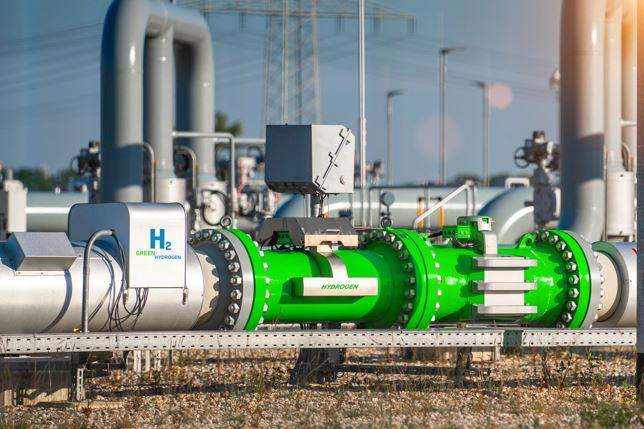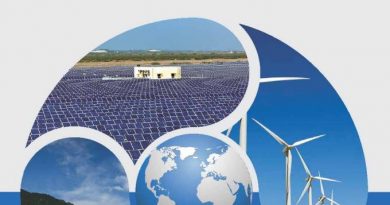“Balancing Variable Renewable Energy Sources Is At The Core of Grid Stability”, Ruturaj Govilkar, Black & Veatch
Ruturaj Govilkar, Country Manager and Managing Director - India and SAARC region at Black and Veatch tracks India's Green Hydrogen Journey, and the many challenges and opportunities it offers.
 Ruturaj Govilkar, Country Manager and Managing Director, India, Black & Veatch
Ruturaj Govilkar, Country Manager and Managing Director, India, Black & Veatch
Countries throughout the world continue to announce new decarbonisation and hydrogen strategies.
In Asia, India has allocated Rs 35,000 crore for energy transition efforts in its Union Budget 2023-24. This covers battery energy storage systems deployment and power transmission lines expansion.
Earlier this year, the country approved the National Green Hydrogen Mission with an initial outlay of Rs 19,700 crore. The mission aims to make India a global hub for producing, utilising and exporting green hydrogen and its derivatives.
India pledges to produce, by 2030, at least 5 million metric tonne (MMT) of the carbon-free fuel per annum with an associated renewable energy capacity addition of about 125 gigawatt (GW).
Decarbonisation and hydrogen usage requires the country to integrate well-established technologies to produce a value-added product that is commercially appealing.
Overcoming Green Hydrogen Production Challenges
As Asia races to decarbonise, a sudden switch to renewable forms of energy may challenge grid stability.
Our research shows that integration of renewable energy into grid systems is the biggest concern facing Asia’s electric industry leaders. Balancing variable renewable energy sources is at the core of grid stability.
Overcoming challenges, including the complex green hydrogen supply chain, will be critical for India to achieve its goals.
Exploring the use of energy storage technologies, such as hydrogen, is one approach for mitigating the risks associated with the energy transition and enhancing grid stability.
Many regional economies have already started studying the complexity of the green hydrogen supply chain which includes the resource’s creation using renewable energy sources as well as storage, transportation, distribution and handling.

Strong economies of scale and supply chain innovation are necessary to meet green hydrogen production goals. Robust and stable green hydrogen demand will help to accelerate supply chain expansion projects. India’s current adoption of green hydrogen technology is limited. Government intervention through schemes, such as the National Green Hydrogen Mission, will encourage production and use.
In addition, developing infrastructure for the safe production, storage and distribution of green hydrogen will make this technology more accessible. This includes building hydrogen fueling stations and pipelines for transporting hydrogen and ammonia.
Successful pilot projects that demonstrate the cost effectiveness of green hydrogen storage and delivery systems are critical to promote industry growth as well. This will build confidence in hydrogen, paving the way for larger ‘hydrogen hubs’ which have the potential to reduce cost over time and accelerate the maturity of hydrogen production technologies. The cost of green hydrogen production remains less competitive if directly compared to energy produced from fossil fuels.
Increasing renewable electricity generation is another approach that can help to reduce the cost of green hydrogen production. This includes expanding renewable energy sources such as solar and wind power.
India’s Renewable Energy Potential
India’s capacity to tap into renewable energy resources positions it well as a developer of green hydrogen over the long term.
The country reported in 2022 that it has installed about 172 GW of capacity from non-fossil fuel sources, including 119 GW renewable energy, 46 GW large hydro and 6 GW nuclear power capacity. India aims to achieve 500 GW of installed electricity capacity from non-fossil sources by 2030.
To enhance its electricity grid by providing better connectivity and resilience, the Union Budget 2023 has prioritized the construction of the inter-state transmission system for evacuation and grid integration of 13 GW renewable energy from Ladakh. Taken together, renewable build up and better grid resilience will ease India’s transition from coal to hydrogen.
Equally important is educating the public about the benefits of green hydrogen and the role it can play in helping to reduce greenhouse gas emissions. Consumer awareness plays a key role in driving the demand for green hydrogen.
Hydrogen Applications in India
In line with its efforts to reduce dependency on imported crude oil, India has an opportunity to plan for the use of green hydrogen as a zero-emissions fuel source for the country’s transport sector, including commercial fleets and aviation.
A few emerging business models are being researched and developed in the country for domestic consumption and export. These include using hydrogen for fleets of vehicles, producing green ammonia and using derivatives of hydrogen as an aviation fuel.
Hydrogen for fleets. Compared to the rising price of fossil fuels, alternative forms of mobility, like electric cars (EVs) and hydrogen-powered vehicles—particularly commercial fleets—may become more affordable.
Recent improvements in hydrogen-fueled Internal Combustion (IC) engines and EV infrastructure will help hydrogen utilisation in India’s mobility industry gain greater traction. The hub-and-spoke-style hydrogen dispensing stations, which are comparable to compressed natural gas (CNG) stations, are anticipated to be put into use soon. Technology development will eventually make it possible to produce hydrogen on site, which will remove the need for hydrogen transport such as small-scale Steam-Methane Reforming (SMR).
Large fleet operators will follow, beginning with the use of grey hydrogen and eventually switching to green hydrogen. By shortening refueling durations, such a technique will overcome the challenges associated with charging EV stations in large vehicles.
Green Ammonia Export. Exporting green ammonia is another promising business model. Under this concept, importing nations might use ammonia as a direct replacement for natural gas and deploy it for essential applications like power generation or as a fuel for shipping.
A significant advantage of this model is that outside the electrolysis process to produce green hydrogen, the production of ammonia is a well-established technology.
Looking at the ammonia pricing levels with respect to recent natural gas pricing trends, an economically viable case is possible if natural gas prices remain high. Increasing demand for natural gas will likely keep the prices up in the future as well.
Exporting green ammonia is an opportunity, in addition to domestic consumption, to meet demand for cleaner fuels and power sources in developed countries with steeper decarbonisation targets.
Derivatives of Hydrogen as an Aviation Fuel. Similar to the ammonia synthesis loop, the basic method for producing Sustainable Aviation Fuel (SAF) is proven and ready for wider application.
With the aviation industry under pressure to reduce carbon emissions, there will be significant projected demand for SAF over the coming decades, making it a promising export opportunity in India. This future path will allow captured carbon dioxide to be reused as a feedstock, resulting in a circular carbon economy.
While SAF technology is currently in development, applications in terms of green hydrogen have yet to be realized. Like ammonia, the differentiating factor will be the hydrogen produced from green sources and the integration of renewable energy.
For these business cases to materialise, demand from offtakers for these green products will be key.
With policies and global scenarios supporting offtake demand, the next challenge will be to determine technological limitations and developments that have yet to be tuned for green applications. Though the concepts appear logical and feasible, integration challenges and definitive solutions have yet to be demonstrated.
The Way Forward
Commercially attractive new business cases around the decarbonisation and use of hydrogen require the integration of multiple, well-proven technologies to create a value-added product. Industry collaborations help to address such integration issues effectively. Black & Veatch is involved in building 245 megawatts (MW) of electrolysis capacity, nearly doubling global green hydrogen production.
In Asia, The Green Solutions (TGS) has appointed Black & Veatch to study the production and storage of green hydrogen in Vietnam utilising solar or wind power supplied through the grid.
Projects that Black & Veatch is working on in India reflect the growing development around the commercial cases of green hydrogen and ammonia sectors as discussed in the article. The company is assisting key developers and Indian conglomerates with different stages of these projects from feasibility projects to Front End Engineering Design (FEED) and engineering and procurement executions. Additionally, the company has completed multiple feasibility studies with major renewable players and major conglomerates in India.




